Papers by Jorge Molina Torres
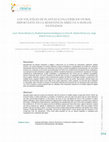
Las plantas responden a plagas e infeccion por patogenos con la emision de una mezcla compleja de... more Las plantas responden a plagas e infeccion por patogenos con la emision de una mezcla compleja de compuestos organicos volatiles (COVs), muestra de la gran diversidad metabolica que poseen. En la naturaleza, estos compuestos pueden participar de manera indirecta al atraer polinizadores, depredadores o parasitoides enemigos de herbivoros. Por otro lado, los COVs desempenan funciones directas como deterrentes de insectos y poseen propiedades antimicrobianas para la defensa contra patogenos. En el presente proyecto, nos centramos en las funciones que desempenan los COVs en la resistencia de las plantas frente a patogenos fungicos. Los cultivares de frijol comun (Phaseolus vulgaris) que exhiben resistencia fenotipica a la antracnosis causada por el hongo, Colletotrichum lindemuthianum, emiten cuantitativa y cualitativamente mas COVs que los cultivares susceptibles. Hemos examinado aprox. 50 COVs derivados de plantas para conocer su capacidad inhibitoria en la germinacion de esporas y/o ...
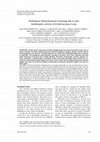
Acta Farmacéutica …, 2004
Sixteen species of the genus Erythrina (Papilionaceae) have been described in Cuba, four of them ... more Sixteen species of the genus Erythrina (Papilionaceae) have been described in Cuba, four of them as endemic. From these different species of Erythrina significant analgesic, diuretic, sedative and antiviral properties were observed. An initial collection was carried out in September/2000 and a second one in April/2001. The preliminary phytochemical screening of branches, leaves (first collection) and bark (both collections) of Erythrina fusca yielded alkaloids, flavonoids, triterpenoids, steroids, saponins, lactones, coumarines, reducing sugars, carotenoids, amines and cardiac glycosides. Polar extracts were assayed for activity against herpes simplex virus types 1 and 2. These extracts inhibited the growth of herpes simplex virus type 1 at an effective medium concentration of 243 µg/mL and herpes simplex virus type 2 at 109.5 µg/mL. RESUMEN. "Revisión Fitoquímica Preliminar de la Actividad Antiherpética in vitro de Erythrina fusca Lour." Dieciséis especies pertenecientes al género Erythrina (Paplilianceae) han sido descritas para Cuba, cuatro de ellas endémicas. Se ha mencionado que estas especies poseen significativa actividad analgésica, diurética, sedante y antiviral. Una recolección original se realizó en septiembre de 2000 y una segunda en abril de 2001. El análisis fitoquímico preliminar de ramas, hojas (primera recolección) y corteza (ambas recolecciones) de Erythrina fusca reveló la presencia de alcaloides, flavonoides, triterpenoides, esteroides, saponinas, lactonas, cumarinas, azúcares reductores, carotenoides, aminas y glicósidos cardíacos. La actividad de los extractos polares fue ensayada contra los virus del herpes simplex del tipo 1 y 2. Estos extractos inhibieron el crecimiento del virus del herpes simplex tipo 1 a una concentración media efectiva de 243 µg/mL y al virus del herpes simplex tipo 2 a una concentración media efectiva de 109,5 µg/mL.
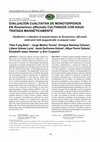
Lamiaceae (labiatae labiadas) family have many species for example Rosmarinus officinalis L., it ... more Lamiaceae (labiatae labiadas) family have many species for example Rosmarinus officinalis L., it is one of the species with the highest antioxidant power by the presence of essential oils, monoterpenes and phenolic compounds. Its vegetative propagation in Cuba is one of its difficulties and in recent years, this species has been removed from the National Formulary of Phytopharmaceuticals because of its availability. The magnetically treated water has been used for irrigation because it stimulates the growth and development of plants, showing that its application can activate metabolism of cells; however, studies have been very limited in these respects. The aim of this work was to evaluate monoterpen bioactive compounds present in the species Rosmarinus officinalis L., cultivated with magnetically treated water in Santiago de Cuba. N-hexane extracts were analysed by the method of thin layer chromatography of high-resolution ( HPTLC ) silica gel (fluka plates, foils analytical Alu th...

Ricinus communis es un cultivo que ha tomado interes por la produccion de aceite para diferentes ... more Ricinus communis es un cultivo que ha tomado interes por la produccion de aceite para diferentes usos industriales y energeticos. Las semillas de higuerilla ademas de contener un alto porcentaje de aceite, provee una fuente importante de antioxidantes que incluyen compuestos polares como los polifenoles los cuales tienen alto valor en la industria farmaceutica y alimentaria. Durante el proceso de extraccion del aceite por el proceso de prensado se generan residuos, siendo las pastas uno de los mas importantes debido a su abundancia. Esta pasta conserva compuestos quimicos y productos a los cuales se les puede dar un valor mediante un procesamiento adicional. Por otro lado, las podas de este cultivo pueden ser revalorizadas tambien mediante la elaboracion de biocompositos, materiales formados por la combinacion de polimeros y fibras naturales. El objetivo de este trabajo fue la caracterizacion de las pastas, extraccion e identificacion de los compuestos fenolicos presentes en las pas...
New Phytologist, 1991
ABSTRACT summaryThe concentration of tocopherol in the leaves of Xanthium strumarium L., plants g... more ABSTRACT summaryThe concentration of tocopherol in the leaves of Xanthium strumarium L., plants growing under vegetative conditions, were analysed to determine whether they are maintained constant in the different leaves, during the light period throughout the vegetative growth of the plant, α- and γ-Tocopherols were present in this tissue. A relation between tocopherol content and leafage was observed. α-Tocopherol accumulated with the age of the leaf. γ-Tocopherol was present in low concentrations throughout the life of the leaf.
Proyecto académico sin fines de lucro, desarrollado bajo la iniciativa de acceso abierto Evaluaci... more Proyecto académico sin fines de lucro, desarrollado bajo la iniciativa de acceso abierto Evaluación en campo de plantas de ñame (Dioscorea alata L.) obtenidas de los microtubérculos formados... 47 Evaluación en campo de plantas de ñame (Dioscorea alata L.) obtenidas de los microtubérculos formados en Sistema de Inmersión Temporal Field evaluation of yam plants (Dioscorea alata L.) obtained from microtubers produced in a temporary immersion system
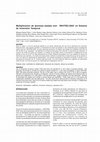
Biotecnologia Vegetal, 2008
Para el cultivo in vitro de Ipomoea batatas no se tienen referencias del uso de los Sistemas de I... more Para el cultivo in vitro de Ipomoea batatas no se tienen referencias del uso de los Sistemas de Inmersión Temporal (SIT), esto podrían contribuir a incrementar el número de plantas in vitro necesarias para la propagación masiva del clon 'INIVITB2-2005' con gran potencial productivo. El objetivo del trabajo fue multiplicar este clon en SIT de 200 ml de capacidad. Se determinó la influencia del tiempo de inmersión, la frecuencia de inmersión, el volumen de medio de cultivo por explante y el tiempo de subcultivo sobre el crecimiento y multiplicación de las plantas in vitro en los SIT. En cada experimento se midió la longitud del explante (cm) y se cuantificó el número de entrenudos por explante y el número de hojas activas. Además, se determinó la masa fresca (g) de las plantas in vitro y se calculó el coeficiente de multiplicación. Los mejores resultados se alcanzaron al utilizar un tiempo y una frecuencia de inmersión de 10 minutos cada tres horas, 15 ml de medio de cultivo por explante con subcultivos cada 30 días. Con ello se alcanzó un coeficiente de multiplicación de 8.01.
Mass spectrometry imaging (MSI) data set in imzML format, obtained from San Pedro cactus (<em&... more Mass spectrometry imaging (MSI) data set in imzML format, obtained from San Pedro cactus (<em>Echinopsis pachanoi</em>) cross-section using Laser Desorption Low-Temperature Plasma ionization. Mapping the ion that corresponds to mescaline shows a star-like distribution of this interesting alkaloid. The experiment is described in: Elucidating the Distribution of Plant Metabolites from Native Tissues with Laser Desorption Low-Temperature Plasma Mass Spectrometry Imaging, Abigail Moreno-Pedraza, Ignacio Rosas-Román, Nancy Shyrley Garcia-Rojas, Héctor Guillén-Alonso, Cesaré Ovando-Vázquez, David Díaz-Ramírez, Jessica Cuevas-Contreras, Fredd Vergara, Nayelli Marsch-Martínez, Jorge Molina-Torres, and Robert Winkler, Analytical Chemistry <strong>2019</strong> <em>91</em> (4), 2734-2743 DOI: 10.1021/acs.analchem.8b04406

High-throughput metabolic phenotyping is a challenge, but it provides an alternative and comprehe... more High-throughput metabolic phenotyping is a challenge, but it provides an alternative and comprehensive access to the rapid and accurate characterization of plants. In addition to the technical issues of obtaining quantitative data of plenty of metabolic traits from numerous samples, a suitable data processing and statistical evaluation strategy must be developed. We present a simple, robust and highly scalable strategy for the comparison of multiple chemical profiles from coffee and tea leaf extracts, based on direct-injection electrospray mass spectrometry (DIESI-MS) and hierarchical cluster analysis (HCA). More than 3500 individual Coffea canephora and Coffea arabica trees from experimental fields in Mexico were sampled and processed using this method. Our strategy permits the classification of trees according to their metabolic fingerprints and the screening for families with desired characteristics, such as extraordinarily high or low caffeine content in their leaves.
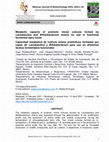
Mexican journal of biotechnology, 2021
The metabolic capacity of probiotic mixed cultures formed by Lactobacillus and Bifidobacterium st... more The metabolic capacity of probiotic mixed cultures formed by Lactobacillus and Bifidobacterium strains was assessed through the determination of the acidification profile and the production of amino acids and volatile compounds, during the fermentation of ultra-pasteurized skim milk. Two mixed cultures formed by [L. acidophilus + B. bifidum] and [L. acidophilus + B. animalis] stood out in the production of essential amino acids: His, Ile, Leu, Met, Thr, Trp and Val. As well as increased production of volatile compounds such as: acetoin, 2-heptanone, 2-nonanone, acetic acid, acid butanoic and hexanoic acid, in contrast to commercial fermented dairy products. Additionally, these bacterial mixed cultures were characterized by the production of distinctive volatile compounds: 1-heptanol, diisobutylcarninol, hemellitol, 1-dodecanol, acetone, 2-pentanone, 2-undecanone, ethyl acetate, benzaldehyde as well as valeric, acetyl valeric and isopropylpyruvic acids. Finally, the culture formed by...
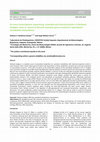
Plant Omics, 2021
Heliopsis longipes is a valuable source of specialized metabolites (or secondary metabolites) wit... more Heliopsis longipes is a valuable source of specialized metabolites (or secondary metabolites) with medicinal properties mainly in roots. However, little is known about genes involved in the biosynthesis of these metabolites, primarily due to the lack of genome or transcriptome resources. In this work, the genes of the biosynthetic pathway of the specialized metabolism from H. longipes roots and leaves through de novo RNA sequencing (RNA-Seq) using the platform of Illumina paired-end sequencing were studied. After de novo transcriptome assembly using the software Newbler, a total of 172,342 non-redundant transcripts with an N50 value of 816 bp was obtained. Further functional classification and annotation with Gene Ontology (GO), BLAST2GO, Kyoto Encyclopedia of Genes and Genome (KEGG), and KEGG automatic annotation server (KAAS), revealed that active genes in tissues are predominately involved in the metabolic process and biosynthesis of specialized metabolite pathways. Differential ...
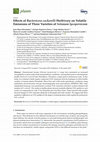
Plants, 2019
Domesticated tomato (Solanum lycopersicum L.) crops have presented an increased susceptibility to... more Domesticated tomato (Solanum lycopersicum L.) crops have presented an increased susceptibility to pests under field and greenhouse conditions. Among these pests is tomato/potato psyllid, Bactericera cockerelli Sulc (Hemiptera: Triozidae), a major pest in solanaceous crops. In this study, we evaluated volatile organic compound (VOC) emissions from the headspace in three healthy varieties of tomato plants (Floradade, Micro-Tom and wild) under greenhouse conditions using solid-phase microextraction and gas chromatography–mass spectrometry (SPME/GC-MS). Later, independent bioassays were performed to evaluate VOC emissions with three varieties infested with nymphs of B. cockerelli. The results in healthy plants showed markedly different VOC profiles in each variety (14 compounds for wild, 17 for Floradade and 4 for Micro-Tom). Plants infested with nymphs showed changes in VOC emissions distinctly in Floradade and wild varieties. We suggest that these qualitative differences in VOC profil...
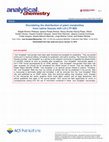
Analytical Chemistry, 2019
Secondary metabolites of plants have important biological functions, which often depend on their ... more Secondary metabolites of plants have important biological functions, which often depend on their localization in tissues. Ideally, a fresh untreated material should be directly analyzed to obtain a realistic view of the true sample chemistry. Therefore, there is a large interest for ambient mass-spectrometry-based imaging (MSI) methods. Our aim was to simplify this technology and to find an optimal combination of desorption/ionization principles for a fast ambient MSI of macroscopic plant samples. We coupled a 405-nm continuous-wave (CW) ultraviolet (UV) diode laser to a three-dimensionally (3D) printed low-temperature-plasma (LTP) probe. By moving the sample with a RepRap-based sampling stage, we could perform imaging of samples up to 16 × 16 cm 2. We demonstrate the system performance by mapping mescaline in a San Pedro cactus (Echinopsis pachanoi) cross-section, tropane alkaloids in jimsonweed (Datura stramonium) fruits and seeds, and nicotine in tobacco (Nicotiana tabacum) seedlings. In all cases, the anatomical regions of enriched compound concentrations were correctly depicted. The modular design of the LD-LTP MSI platform which is mainly assembled from commercial and 3D-printed components facilitates its adoption by other research groups. The use of the CW-UV laser for desorption enables fast imaging measurements. A complete tobacco seedling with an image size of 9.2 × 15.0 mm 2 was analyzed at a pixel size of 100 × 100 μm 2 (14,043 mass scans), in less than 2 h. Natural products can be measured directly from native tissues, which inspires a broad use of LD-LTP MSI in plant chemistry studies. 2
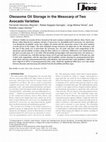
Journal of Oleo Science, 2018
INTRODUCTION The main feature that distinguishes the avocado fruit Persea americana Mill. is the ... more INTRODUCTION The main feature that distinguishes the avocado fruit Persea americana Mill. is the high content of oil in the mesocarp, which gives the fruit its creamy texture and contributes to its flavor. The oil is a source of saturated palmitic and stearic acid , monounsaturated oleic and palmitoleic acid , and polyunsaturated linoleic and linolenic acid fatty acids that impart health benefits through anticholesterolemic, antioxidant, and anti-inflammatory activities 1 3. Studies on avocado fruit oil have mostly focused on the commercial cultivars, such as Hass, Bacon, and Fuerte, whereas few studies have been carried out on the fruits of native Mexican P. americana var. drymifolia and American P. americana var. americana varieties, despite their excellent medicinal and nutritional properties 4 7. The avocado tree belongs to the family Lauraceae, a primitive group of Angiosperms that was domesticated during the pre-Hispanic period in Mesoamerica as three botanical varieties P. americana var. americana, P. americana var. guatemalensis, and P. americana var. drymifo
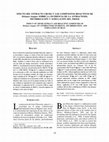
For bean (Phaseolus vulgaris L.) anthracnose control under greenhouse and field conditions, the e... more For bean (Phaseolus vulgaris L.) anthracnose control under greenhouse and field conditions, the effect of crude extract and the mixture of bioactive afinina (A) compounds and bornyl decatrién (DB) obtained from Heliopsis longipes 'A. Gray' Blake root was assessed. Besides, the effect on bean root colonization by shrub vesicle mycorrhizal fungi (HMVA) and nodulation of nitrogen-fixing bacteria was evaluated. Two of the EC concentrations (700/70 and 70/7µ µ µ µ µg mL − − − − −1) and A/DB (700/70 and 70/7µ µ µ µ µg mL − − − − −1), under greenhouse conditions, reduced anthracnose incidence by 90%, without significant reduction (p>0.05) of dry weight of the treated plants. Under field conditions, the evaluated EC concentrations (70/7µ µ µ µ µg mL − − − − −1) and A/DB (70/7µ µ µ µ µg mL − − − − −1) reduced anthracnose incidence reduction by 88%, without significant effect on dry weight of the treated plants (p>0.05), which confirmed the capacity of these compounds to reduce the disease. Application of EC and A/DB mixture under field conditions did not affect establishment of HMVA and nitrogenfixing bacteria in bean roots.
Acta Farmac??utica …, 2004
RESUMEN. El g??nero Zanthoxylum (familia Rutaceae) est?? representado mundialmente por m??s de 16... more RESUMEN. El g??nero Zanthoxylum (familia Rutaceae) est?? representado mundialmente por m??s de 160 especies, muchas de las cuales se emplean en medicina tradicional. En este trabajo se realiza un an??lisis de la informaci??n existente en importantes bases de datos ...






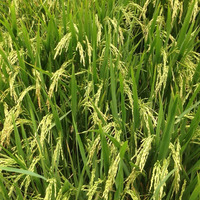
Uploads
Papers by Jorge Molina Torres